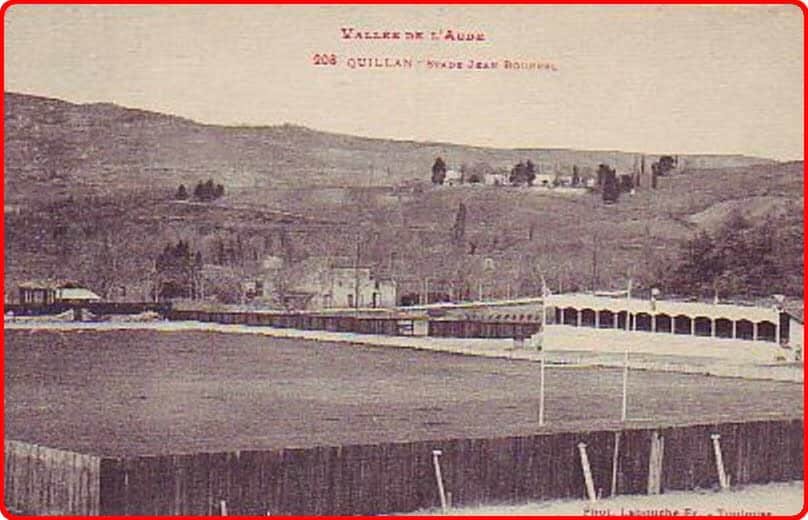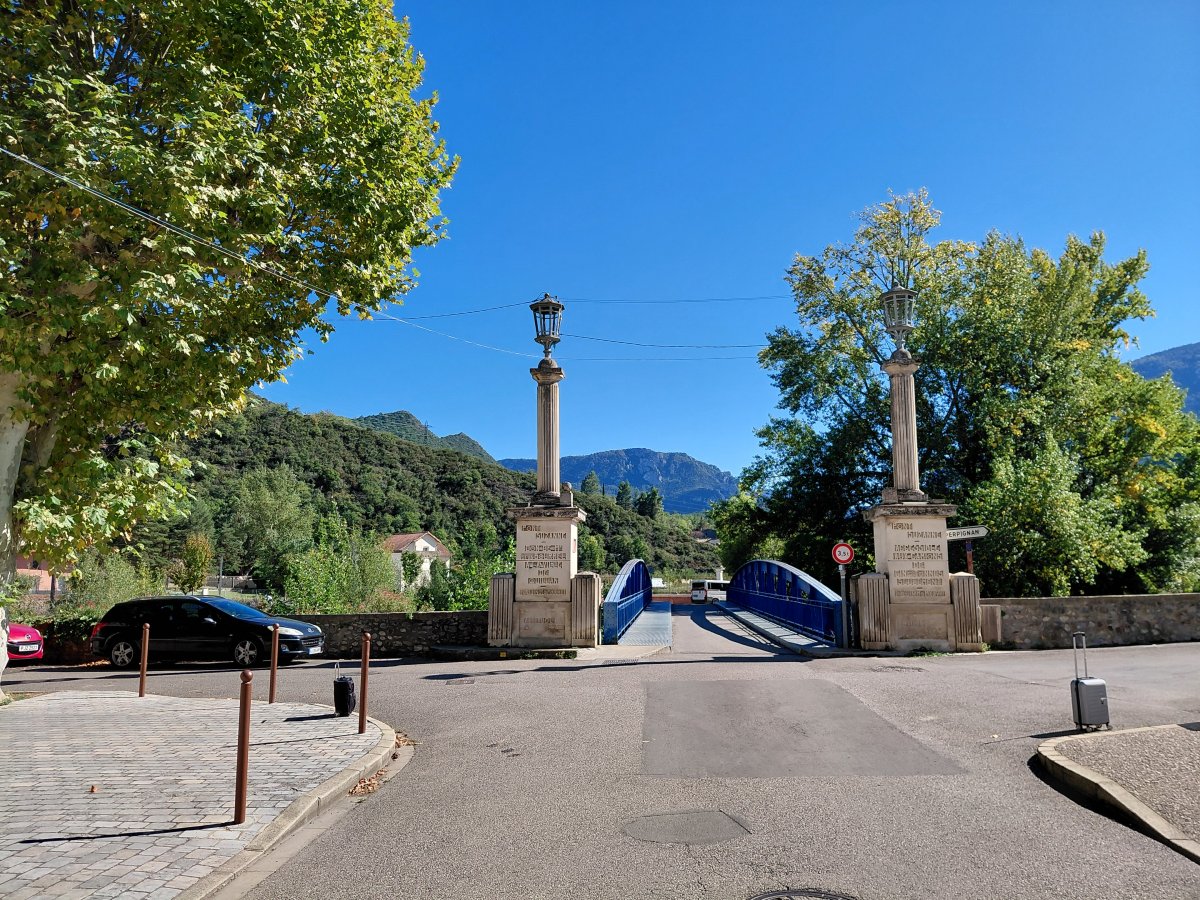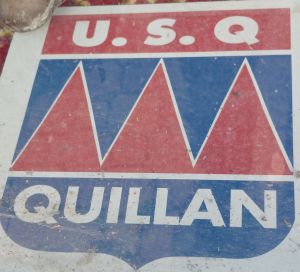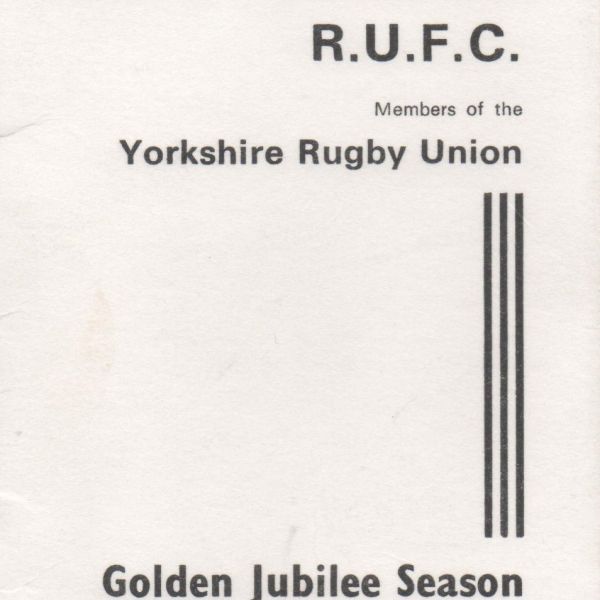Union Sportive Quillan was formed in 1902 and for the first few years of its existence US Quillan just played fixtures against other local clubs’. It didn’t enter the French regional competitions until 1910, but struggled to compete at that level and wasn’t particularly successful. However, that all changed in 1925 when Jean Bourrel, whose factory was the biggest employer in the town, was elected Mayor of Quillan. Jean Bourrel’s factory made hats and employed over a thousand people. Bourrel was a sports enthusiast and following his election as Mayor he became patron of the US Quillan rugby club.

Stade Jean Bourrel
Bourrel's involvement with US Quillan resulted in it becoming an openly professional rugby union club in a league where most of the other clubs also paid their players, but pretended that they didn’t! In order to achieve his ambition of winning the French Championship Bourrel recruited internationals from neighbouring clubs including half of the Perpignan team and their coach Gilbert Brutus. Bourrel promised his recruits employment in his factory or the opportunity to run a café or a small shop. All the recruits were well paid and as professionals were able to train several times a week. Jean Bourrel’s investment in the club brought success. US Quillan finished as runners-up in the 1927/28 French 1st Division Championship Final going one step further in 1928/29 by beating FC Lezignan by 11 points to 8 to win the Championship. In 1929/30, after another successful league campaign, Quillan couldn’t repeat its success of the previous season, losing to Agen by 4 points to nil in the Final.
As well as investing in the rugby club Jean Bourrel also invested in the town of Quillan's infrastructure, A bridge was constructed named after his daughter Suzanne that linked the town and Bourrel's factory. The bridge was inaugurated by the French President Gaston Doumerge in 1928.


Pont Suzanne
In the late 1920s and early 1930s evidence of French rugby union players being paid to play began to emerge and it became obvious that US Quillan wasn’t the only French club paying its players. Despite denials from the French Federation, this was evidence that the other countries in the Five Nations competition couldn’t ignore. As well as the allegations of professionalism there had also been a number of violent incidents in club and International matches and reports of drug taking. The French Federation seemed unwilling or unable to deal with these issues and as a result England, Ireland, Scotland and Wales, the other four countries in the Five Nations decided in 1931 that France should be excluded from the competition, a ban that lasted until 1947.
France’s ban from the prestigious Five Nations created an opportunity for rugby league. Jean Galia, a US Quillan player and French International who had been an important member of the Quillan XV and had also encouraged other top rugby union players to join the club moved to play for Villeneuve in 1930. Two years after his move to Villeneuve, Galia was accused of receiving payment for playing. Galia denied the accusation, but this time the French Federation ignored Galia’s explanation and suspended him from rugby union. The Rugby Football League had attempted to introduce rugby league into France in the early 1920s, but that attempt had failed. However, this time the situation was very different. There was an opportunity presented by France’s Five Nations ban and Jean Galia’s suspension that was too good to ignore. Galia was approached by a number of leading English rugby league officials and asked to organise a French team to tour England in March 1934. Galia, a charismatic figure, had no problem in recruiting another sixteen top rugby union players willing to travel to England and play rugby league. The tour was a success and the French rugby league was formed on the 6th of April 1934.

Galia's Boys
The absence of International rugby union in France had given rugby league an opportunity that it gratefully accepted. Crowds flocked to the International rugby league games and in the years leading up to World War Two the sport of rugby league in France was booming.
Jean Galia is rightly credited with being the driving force behind rugby league becoming established in France. However, it could be argued that Jean Bourrel’s involvement with the Quillan club was also significant. The money he spent in order to recruit an openly professional Championship winning team had probably provided much of the evidence of professionalism that led to France being banned from the Five Nations opening the door to rugby league. I am sure that US Quillan and Jean Bourrel never imagined that the success of their club in the late 1920s would ultimately enable French rugby league to become established and successful in the 1930s.
Following US Quillan’s loss to Agen in the 1930 Championship Final Jean Bourrel’s support for the club began to be scaled down. By 1934 the hat making industry was in decline and Jean Bourrel’s factory in Quillan was struggling. The decline continued after World War Two with Bourrel’s factory finally closing in the early 1950s.

The site of Jean Bourrel's factory










